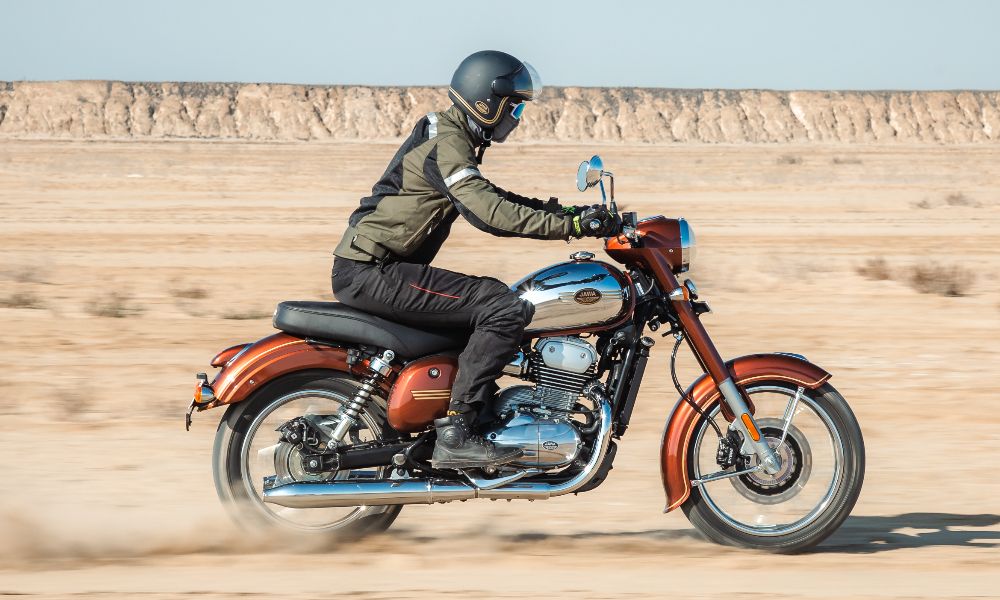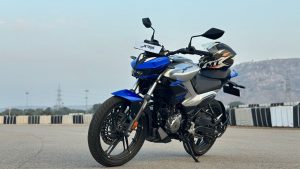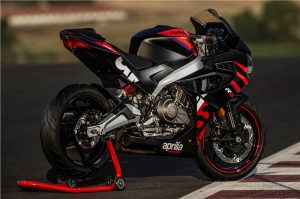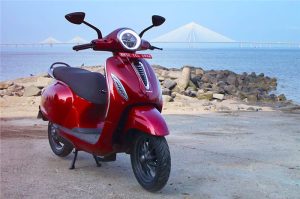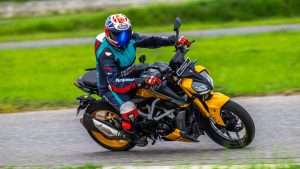At first view, this may look like the same Jawa that came out a few years ago. Even though it looks almost the same, there are some big differences beneath the skin. Welcome to the new Jawa 350! It has a new engine, a new chassis, bigger tyres, more ground clearance, and even a new name.
Design and build quality of the Jawa 350
In true Jawa style, the 350 still looks the part. You still get the double exhausts, the chromed fuel tank, the spoked wheels with tubed tyres, and the round LED headlight that’s set pretty high up. It does, however, come in a new paint colour called “mystic orange,” which looks pretty good. The instrument panel has also been updated, and the seat has been tweaked.
In conclusion, the new Jawa 350 is easy to spot for what it is. A classy vibe comes from the heavy use of chrome and the small details all over. The fit and finish are also much better than on older Classic Legends models. I like how they’ve organised the wires around the bike the most. However, it is still hard to read the lower numbers on the horizontally set speedo, just like they were on the older Jawa.
Jawa 350 engine, how to ride it
This is the new 334cc engine that we’ve seen on other Yezdi models. It’s the heart of the changes. The output has also changed, and this is in place of the 294cc unit that was there before. This one has about 5hp less power (22.5hp), but it has about 1 Nm more torque (28.1Nm).
Based on the numbers, this might not seem like an upgrade at all. But the new engine hits its peak power 750rpm and torque 500rpm faster than the 294cc engine. And that effect is even stronger in real life than it sounds on paper.
The low-end grunt and tractability of this engine really make it stand out. In fact, you can cruise along at 20kph in third gear, and it will speed up right away. But the refinement could have been better, because you can feel the vibes on the handlebars and footpegs as soon as the frequency goes up to the middle range.
Jawa says that the cooling system has been improved to make up for the bigger engine. During our ride, we did see a warning for high temperatures and a small amount of coolant overflow. Later, when we were going through some traffic, the check engine light came on. It did get warmer after a while, but the check engine light stayed on the whole time we were riding. Even though these problems were happening, the bike kept running without any speed problems. The Jawa 350 also has a nice, powerful exhaust note, and buyers can get rid of the db killer by unscrewing two bolts, which makes the sound better.
Jawa 350 brakes, gearbox, and features
There is also a slip and help clutch on the Jawa 350, and it works pretty well. It’s easy to change gears with the light clutch lever, even in traffic, and the 6-speed gearbox works well. It stops well enough, but the tall front end dives quite a bit when you brake hard. There are now warning lights, a dual horn, two trip metres, and an engine cut-off on the side stand for the Jawa. It also comes with dual-channel ABS as standard.
Changes to the Jawa 350 chassis
A new frame is also good for the Jawa 350. The main frame is still a double cradle unit, but the suspension is new and the swingarm has been made longer, which is why the wheelbase is longer at 1449mm. The seat height has gone up from 765mm to 790mm and the ground clearance has gone up from 165mm to 178mm. This is because the suspension has been changed and is now taller than it was before.
It now weighs 194 kg, which is almost the same as the Royal Enfield Classic 350. The Jawa 350 is still a friendly and easy to ride motorbike, even with these changes that make it more substantial. Both sets of tyres are bigger than they were before. The front tyres are 100/90-18 and the back tyres are 130/80-17.
Jawa 350 ride and swerve
The Jawa 350 feels quick and light on its feet on the road, and it turns in very quickly, even though the front end is raked and the wheel is 18 inches in diameter.
In the back, the ride is a bit harder, but it’s never painful because the seat is well-padded, which we’ll talk about next. In general, the Jawa 350 feels stable, whether it’s in traffic or on the highway.On our ride, we also went on a short off-road trail, which the Jawa handled without any problems.
Jawa 350 comfort and extras
For someone who is 5’11”, the Jawa 350 is also very easy to use. I’m sitting up straight, and it’s not hard to reach the handlebars. The new seat also makes things better. I stayed in the saddle for hours and didn’t feel any pain at all. Even though the seat is higher, bigger riders will still feel like their knees are higher than they should be. This won’t be a problem for average-height riders, though. You can get a lot of different add-ons for the Jawa 350, like a big windscreen, leg guards and even saddlebags for your bags.
Jawa 350 price, review
The price of the dual-channel ABS version of the old Jawa was Rs 2.04 lakh (ex-showroom, Delhi), while the price of this new Jawa 350 is Rs 2.15 lakh. The price has only gone up by Rs 11,000, but the changes are so big that it seems worth it after all. But now it’s very close to the Royal Enfield Classic 350, which has been around for a long time and is very popular. It starts at Rs 1.93 lakh and goes up to Rs 2.25 lakh. It remains to be seen how many people who want to ride a classic motorcycle choose the more modern Jawa over the Classic 350.
The new Jawa 350 is a good step forward for Classic Legends as a whole. Even though it’s been updated, the motorbike still looks great, rides smoothly, and has better fit and finish. In this way, it does offer more than it did before.

